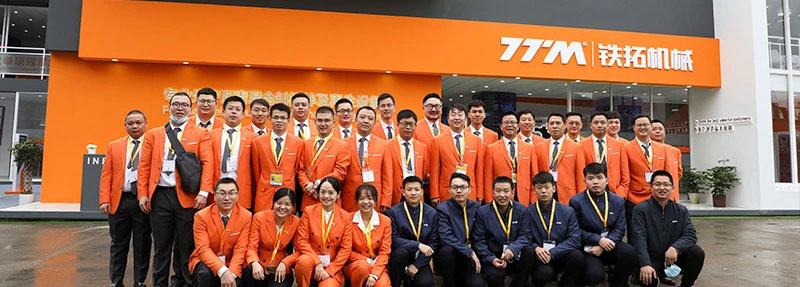Ever driven past a highway job-site and wondered, “How on earth do they move that much dirt in one day?” The answer lies in a surprisingly diverse fleet of machines, each engineered for a very specific task. In this article we break down the types of equipment used in road construction, why contractors choose one over another, and how the right mix keeps schedules (and budgets) from going sideways.
Heavy Earthmoving Heroes: From Scrapers to Scrapers-Plus
Before the first layer of gravel is laid, the terrain has to be coaxed into shape. Motor graders rule this stage, shaving high spots and filling low ones with an accuracy that can surprise first-time operators. Scrapers—those giant bowls on wheels—haul and place soil in a single pass, slashing the need for extra trucks. For rocky ground, a ripper-equipped bulldozer tears up compacted layers faster than you can say “hardpan.” Fun fact: a single modern scraper can move enough earth to fill an Olympic pool in under two hours, which is why contractors swear by them when schedules get tight.
Soil Stabilizers: The Quiet Guardians of Long-Term Pavement Life
Once the profile looks right, the sub-grade still needs to stay that way. Cue soil stabilizers, machines that look like oversized rototillers but pack a high-tech punch. They pulverize clumps, inject lime or cement, and leave behind a rock-solid platform. Skipping this step is like building a house on quicksand; sure, you could do it, but you’ll regret it the first time a pothole shows up before the paint on the guardrails is even dry.
Asphalt Pavers: Precision at 160 °C
When people picture road construction, they usually imagine the asphalt paver, its hopper glowing with steaming black mix. Today’s pavers use sonic sensors to keep mat thickness within a tenth of an inch, while screed plates vibrate at 3,000 rpm to knock out air pockets. The result? A surface smooth enough for the inevitable Instagram shot of fresh asphalt. Bonus tip: look for pavers with variable-width screeds; they let crews adjust on the fly instead of stopping to swap plates—time saved equals money saved.
Compaction Machines: Tandem, Pneumatic, and Intelligent
Fresh asphalt is only as good as its density. Tandem steel-drum rollers provide the initial “breakdown” pass, followed by pneumatic tire rollers that knead the mat like dough. Modern units boast onboard GPS that records temperature and pass counts in real time. Miss a spot and the system flashes red; no more guessing games. Some sites even deploy “intelligent compaction” rollers that automatically adjust amplitude based on feedback, ensuring uniform density across the entire lane width.
Concrete Slipform Pavers: When Strength Beats Flexibility
Interstates and airport taxiways favor concrete because it lasts decades. Slipform pavers extrude a continuous ribbon of concrete without fixed forms, guided by laser sensors. The ride quality rivals asphalt, yet the surface reflects heat and stands up to studded tires. If you’ve ever landed on a runway and barely felt the touchdown, thank one of these behemoths.
Milling Machines: Turning Old Into New
Full-depth reconstruction is pricey, so contractors often “mill and fill.” Cold planers with diamond-tipped teeth chew up distressed asphalt to a preset depth—usually 1–4 in.—and conveyor it into waiting trucks for recycling. The same machine can create rumble strips or texture bridge decks for better skid resistance. A single milling drum may carry over 300 bits; swap them out on schedule and you’ll avoid the nightmare of a mid-project breakdown at rush hour.
Support Cast: Rollers with a Twist, Light Towers, and the Grunt Work
While the headline acts get the glory, several under-the-radar players keep the show on the road. Road wideners attach to graders to extend shoulders without extra formwork. Compact track loaders shuttle pallets of Geo-synthetic fabric across muddy sub-bases. Light towers, those ubiquitous “balloon on a stick,” let crews hit night-shift deadlines without turning local traffic into a parking lot. And then there’s the humble plate compactor; yeah, it’s small, but try building a retaining-wall backfill without one and you’ll see why operators treat it like gold.
Environmental Guardians: Dust Suppression and Hybrid Drives
Regulatory pressure is reshaping equipment choice. Water-spraying attachments on crushers keep silica dust below OSHA limits, while hybrid pavers cut fuel burn by up to 15%. Some European firms now run electric mini-excavators for inner-city repair work—zero tailpipe emissions, happier neighbors. Expect these trends to jump the Atlantic soon; nobody wants to explain to a city council why kids near the job site need inhalers.
Putting It All Together: Matching Machine to Mission
Choosing the right mix of equipment is less about horsepower and more about logistics. A rural highway with low traffic might swap an asphalt paver for a concrete one if local limestone is cheap. Urban night work may favor smaller milling machines that can be towed away before morning rush. The takeaway? Successful contractors don’t just own machines—they choreograph them like a pit crew at Daytona.
So the next time you detour around a construction zone, you’ll know the choreography behind the chaos. From motor graders that shave earth like a barber’s blade to intelligent rollers that sing when density is just right, each unit plays a part. Understanding the types of equipment used in road construction not only satisfies curiosity; it helps engineers, suppliers, and taxpayers ask smarter questions—and, hopefully, reach smoother roads faster.

